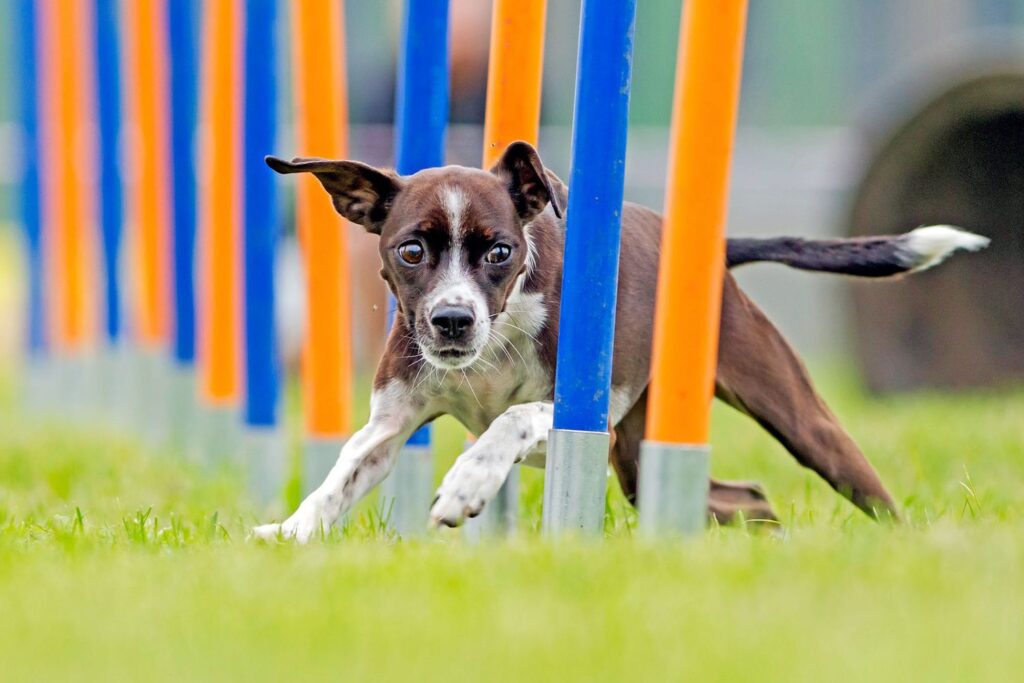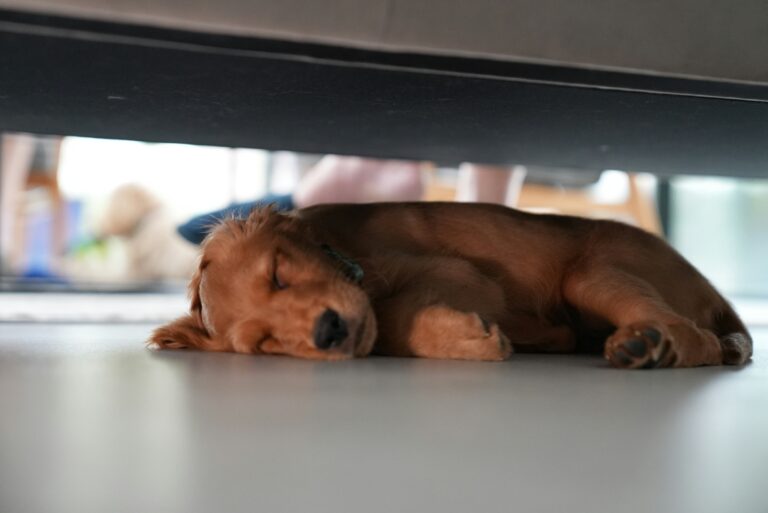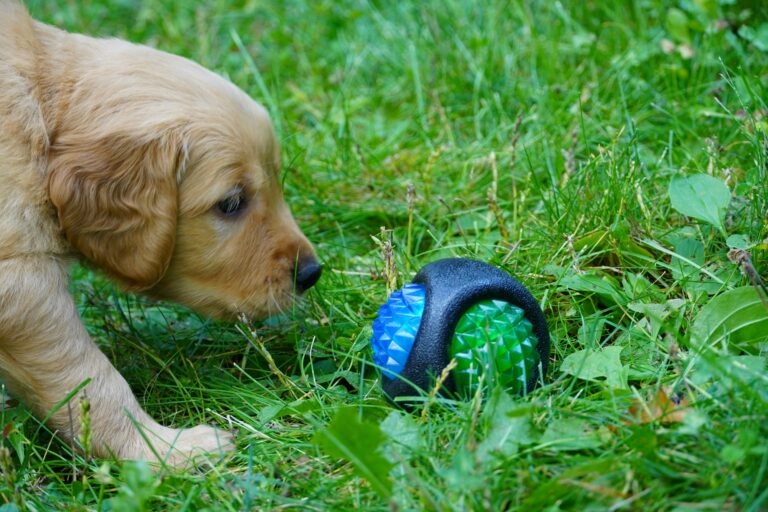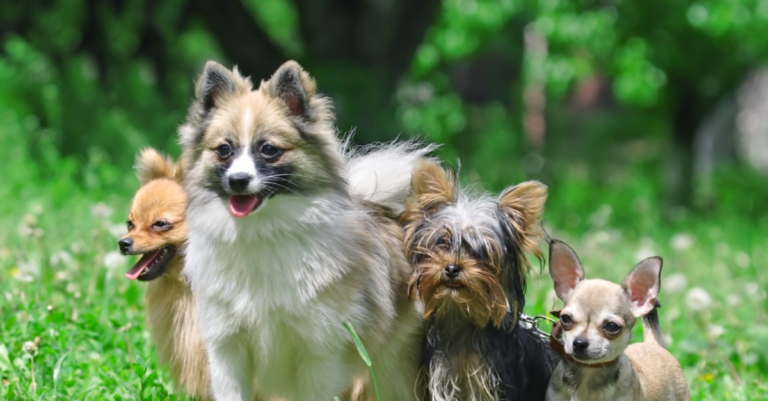Imagine your small dog, who may often be underestimated due to their size, dazzling everyone with their speed, intelligence, and agility. “Tiny But Mighty: Unleash Your Small Dog’s Potential with Agility Training!” delves into this world, revealing the hidden potential residing within our petite four-legged friends. This informative piece, packed with tips, techniques and training methods, is tailored to transform your small canine companion into a dynamo of agility and grace.
The initial sections will focus on dispelling common myths surrounding small dogs and their abilities, proving that size truly doesn’t matter when it comes to agility training. We will uncover how to tap into your dog’s natural instincts and energy, allowing them to excel in agility courses, regardless of their stature. Through this, we aim to inspire and motivate dog owners to challenge their little ones and elevate their training sessions.
As we advance, you will discover step-by-step guides on various agility exercises suitable for small dogs. These exercises will not only enhance their physical skills but also stimulate their mental capacities, leading to a well-rounded, happier pet. We will also provide you with practical advice on how to incorporate this training into your daily routine, making it a fun and enjoyable experience for both of you.
Moreover, we will feature interviews with professional dog trainers who specialize in training smaller breeds. Their insights and experiences will prove invaluable for any dog owner, as they share their secrets to success in the field of agility training. So, prepare to embark on this exciting journey and get ready to unleash your small dog’s enormous potential.

Building Your Agility Course at Home
Setting up an agility course at home is an accessible and affordable way to practice consistently and build your small dog’s confidence. You do not need professional-grade equipment to start. Many common household items can be repurposed into basic agility obstacles.
Chairs and broomsticks can create simple jumps, while a collapsible children’s play tunnel can simulate the agility tunnel. Cones, PVC pipes, or even upright garden stakes can act as weave poles. With a bit of creativity, you can create an engaging course that challenges your small dog without overwhelming them.
Start with just a few obstacles to keep your dog focused. As they become more skilled and confident, you can expand the course and introduce new elements like pause tables, seesaws, and hoop jumps. Always prioritize safety by securing obstacles firmly and ensuring surfaces are non-slip.
The Importance of Progression in Agility Training
Agility training should always be approached gradually. Small dogs, while often energetic, need time to build the strength, coordination, and confidence necessary to navigate complex courses successfully.
In the early stages, focus on introducing one obstacle at a time. Spend several sessions mastering each piece of equipment. For example, you might spend an entire week just working on the tunnel before moving on to jumps.
Progression not only prevents injury but also ensures that your dog enjoys training sessions and does not feel overwhelmed. Mastery builds enthusiasm, and each small success lays the foundation for the next challenge.
Essential Commands for Agility Training
Certain verbal commands are incredibly useful for agility training and can help guide your dog through the course with ease. Teaching these early will make a big difference once you move into full runs.

Some essential agility commands include:
Go: Encourages your dog to move forward enthusiastically. Jump: Signals the dog to leap over an obstacle. Tunnel: Directs your dog to enter and move through a tunnel. Weave: Guides your dog through a line of weave poles. Left/Right: Helps indicate turns in the course. Wait: Tells your dog to pause before taking on the next obstacle.
Incorporating these commands into your everyday training routine helps normalize them for your dog and builds a strong communication system that you can rely on during competitions or casual agility exercises.
Common Mistakes in Agility Training and How to Avoid Them
As you embark on agility training with your small dog, it is natural to encounter a few stumbling blocks. Recognizing common mistakes can help you avoid them and maintain a positive, progressive training journey.
Pushing Too Fast
Rushing your dog through new obstacles can lead to confusion, fear, or injury. Take your time to build skills gradually and celebrate every small success.
Using Inappropriate Equipment
Equipment designed for large dogs might be too high or unstable for small breeds. Always choose or modify equipment to suit your dog’s size and ability.
Training When Your Dog Is Tired
Training a tired dog often leads to frustration for both parties. Schedule sessions when your dog is fresh and full of energy but not over-excited.
Skipping Warm-ups and Cool-downs
Just like human athletes, dogs benefit from warming up before physical activity and cooling down afterward. Start each session with light play and stretching exercises to prepare their muscles and prevent injuries.
How Agility Training Strengthens the Bond Between Owner and Dog
Beyond the physical and mental benefits, agility training has a profound effect on the relationship between a small dog and its owner. It fosters communication, trust, and mutual understanding in a unique and rewarding way.
As you work together to overcome challenges, your dog learns to look to you for guidance and reassurance. This cooperation builds a deep emotional connection and creates a sense of teamwork that extends beyond the agility field into everyday life.
Small dogs often form especially strong bonds with their owners, and agility training amplifies this closeness, offering a structured yet playful way to reinforce trust and affection.
Choosing the Right Agility Class for Small Dogs
If you prefer structured instruction, enrolling in a professional agility class can be an excellent option. However, not every class is well-suited to the specific needs of small dogs.
Look for classes that specifically accommodate small breeds. The instructors should be experienced in working with petite dogs and understand the adjustments needed in equipment height, pacing, and handling techniques.
Small group sizes are ideal to prevent intimidation by larger dogs and to ensure each dog gets individual attention. Positive reinforcement should be the cornerstone of the training philosophy, and classes should prioritize safety, fun, and confidence-building over competitiveness.
Mental Stimulation Through Agility Challenges
Agility is not just about physical prowess. For small dogs, mental stimulation is equally important. Planning the sequence of obstacles, responding to your commands, and figuring out new challenges engage their cognitive skills.
You can introduce “puzzle” elements into your agility course to further stimulate your dog’s mind. For example, setting up obstacles that require problem-solving, like a multi-tunnel setup where only one leads to a reward, encourages critical thinking.
Regular mental exercise through agility prevents boredom-related behavior problems such as chewing, barking, or digging. It also keeps aging small dogs mentally sharp and vibrant.
Adjusting Agility Training for Different Small Dog Breeds
Each breed brings its own unique strengths and challenges to agility training. Recognizing these differences allows you to tailor your approach for maximum success.
Fast and energetic breeds like Jack Russell Terriers excel at fast-paced courses and may require extra attention to control and focus. Breeds with longer backs, like Dachshunds, should avoid jumps that are too high and need extra warm-up and stretching exercises to protect their spines. Toy breeds such as Yorkies or Pomeranians may need lighter, softer equipment and encouragement to boost their confidence, especially in larger spaces. Brachycephalic breeds like Pugs need carefully moderated exercise sessions to avoid overheating and breathing difficulties.
Understanding your dog’s breed tendencies enables you to adapt your agility training program to their needs, ensuring it remains safe, fun, and effective.
Introducing Agility Training at Any Age
Although starting agility training during puppyhood is ideal for flexibility and adaptability, it is never too late for a small dog to start learning.
Adult dogs can gain just as much from agility training, provided they are healthy and their training program is adapted to suit their physical capabilities.
For older dogs, low-impact agility exercises, such as walking through weave poles or a short tunnel, can maintain joint mobility and mental acuity without putting undue strain on their bodies.
A thorough vet check-up before starting agility is recommended for older dogs to ensure they are fit to participate safely.
Celebrating Success in Agility Training
Progress in agility training deserves to be celebrated, no matter how small the milestone may seem. Learning a new obstacle, improving speed, building better focus, or even simply showing more enthusiasm for the activity are all victories.
Small dogs often thrive on praise and positive attention. Regularly celebrating their progress strengthens their motivation and reinforces their love for the game.
Consider setting up mini competitions with friends or attending beginner-level agility trials if your dog enjoys the sport. Participation, not perfection, is the goal, and every experience contributes to your dog’s confidence and skillset.
Building Your Agility Course
You can create an agility course at home using simple items or purchase ready-made equipment.
- Jumps: Use cones and dowels or broom handles.
- Tunnels: A children’s play tunnel works perfectly.
- Weave Poles: You can use slalom poles or simply stick some dowels into the ground.
Designing a Beginner’s Course
A beginner’s course should be simple and straightforward. Start with a few jumps, add in a tunnel, and gradually introduce weave poles. As your dog’s confidence and skill level increase, you can add more obstacles and complexity.
Training Tips and Techniques
Training your small dog in agility requires consistency, patience, and positive reinforcement.
Keep Sessions Short and Fun
Training sessions should be short and fun to keep your dog engaged. Start with short 5-minute sessions and gradually increase the length as your dog’s endurance improves.
Use Positive Reinforcement
Positive reinforcement is key in agility training. Reward your dog with treats, praises, or toys every time they successfully navigate an obstacle.
Be Patient
Remember that each dog learns at their own pace. It’s important to remain patient and not push your dog too hard.
Maintaining Safety during Training
Ensure Equipment Safety
Inspect the equipment regularly to ensure it’s safe and secure. Avoid using equipment that is too high or difficult for your dog to navigate safely.
Consider Your Dog’s Age and Health
Not all dogs are suitable for agility training. Puppies, older dogs, and dogs with health conditions should have a thorough check-up before starting agility training.
In summary, agility training for small dogs is a fun and engaging activity that can benefit both the dog and the handler. With the right preparation, patience, and training techniques, your small dog can unleash their full potential and excel in this exciting sport.
Conclusion
In addition to the numerous physical and mental benefits, agility training nurtures essential life skills in small dogs. It teaches perseverance, focus, and adaptability, as dogs learn to tackle new challenges and navigate increasingly complex courses. These skills extend beyond the training field, positively influencing a small dog’s behavior in daily life by enhancing their problem-solving abilities and emotional resilience.
Agility also provides small dogs with a valuable outlet for their natural energy. Many behavioral issues seen in small breeds, such as excessive barking, destructive chewing, or restlessness, often stem from a lack of physical and mental stimulation. By incorporating agility exercises into their routine, owners can meet their dog’s activity needs in a structured, fulfilling way, reducing the likelihood of unwanted behaviors and promoting a calmer, happier home environment.
Moreover, agility training can foster a sense of accomplishment and pride in small dogs. Each obstacle conquered, each course completed, builds their self-esteem and enthusiasm for learning. This transformation can be especially powerful for timid or anxious dogs, helping them blossom into confident, spirited companions.
For owners, the journey of training, guiding, and celebrating successes alongside their dogs creates memories that last a lifetime. It turns ordinary moments into milestones, strengthening the deep emotional connection that makes the human-canine bond so extraordinary.
Ultimately, agility training celebrates the heart, courage, and intelligence that small dogs bring into our lives. It showcases that strength is not determined by size but by spirit. Whether your dog dreams of competing in agility trials or simply mastering a backyard course, the experiences gained through training enrich both their life and yours. So embrace the adventure, champion your small dog’s mighty heart, and enjoy every leap, tunnel, and twist along the way.



